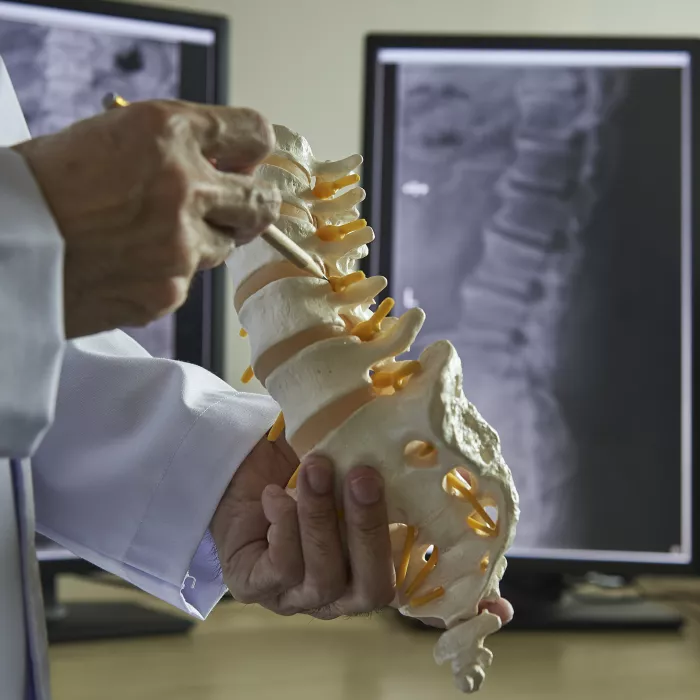December 11, 2023

Vertebral compression fractures (VCFs) in the spine are the most common osteoporotic fractures, with approximately 1 million to 1.5 million occurring annually in the U.S. When left untreated, they can cause significant pain, loss of function, and reduction in height.
In a new study, Exponent's Derek Holyoak, Michael Frohbergh, and Kevin Ong, along with clinical coauthors, tested new versions of surgical instruments for a common treatment for VCF: balloon kyphoplasty (BKP) with next-gen directional assist instruments.
BKP is a type of vertebral augmentation, which involves inserting one or two inflatable balloon devices into the vertebrae to create a cavity and injecting bone cement into vertebral bodies to treat traumatic injury fractures and painful osteoporotic fractures in the spine. Using BKP with a directional assist instrument — Kyphon Assist (KA) — helps in the placement of the balloons and cement.
In "Height Restoration and Sustainability Using Bilateral Vertebral Augmentation Systems for Vertebral Compression Fractures: A Cadaveric Study," the authors compared how well BKP with KA, BKP, and a titanium implantable vertebral augmentation device (TIVAD) helped restore and sustain height in cadaveric spinal specimens.
The authors reported that height restoration was comparable using all three methods, as was height sustainability under lower levels of loading. The only difference was observed under higher levels of loading that represented lifting a 5-10 kg weight from the floor (1,250 Newtons), where less anterior height reduction was observed in the BKP w/KA group compared to TIVAD, indicating greater height sustainability for BKP w/KA. They concluded that the newer BKP w/KA may be an appropriate treatment option for higher-demand patients involved in weight resistance training activities.

"Height Restoration and Sustainability Using Bilateral Vertebral Augmentation Systems for Vertebral Compression Fractures: A Cadaveric Study"
From the publication: "Previous cadaveric testing comparing vertebral augmentation types has suggested that superior height restoration was achieved with a titanium implantable vertebral augmentation device (TIVAD) compared to BKP. However, since this study was performed, a newer generation of BKP with directional assist instruments was developed for clinical use."



